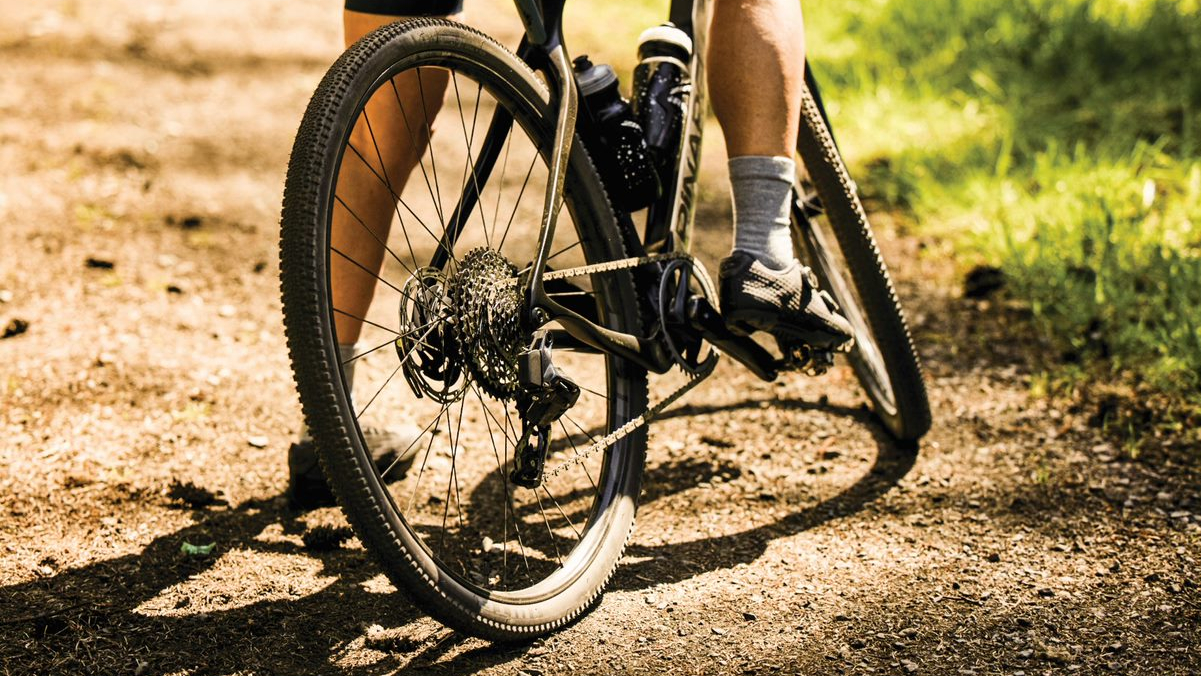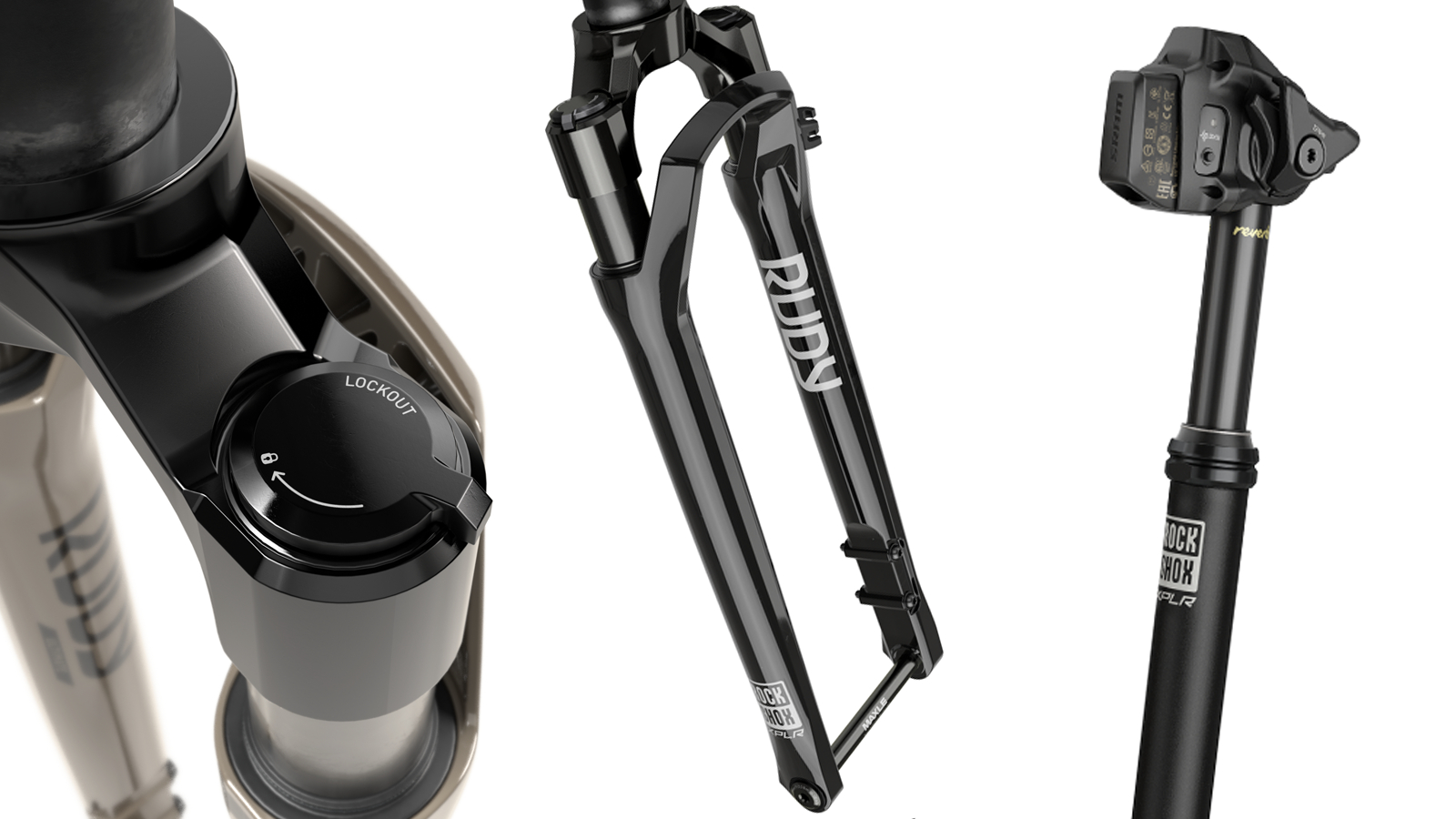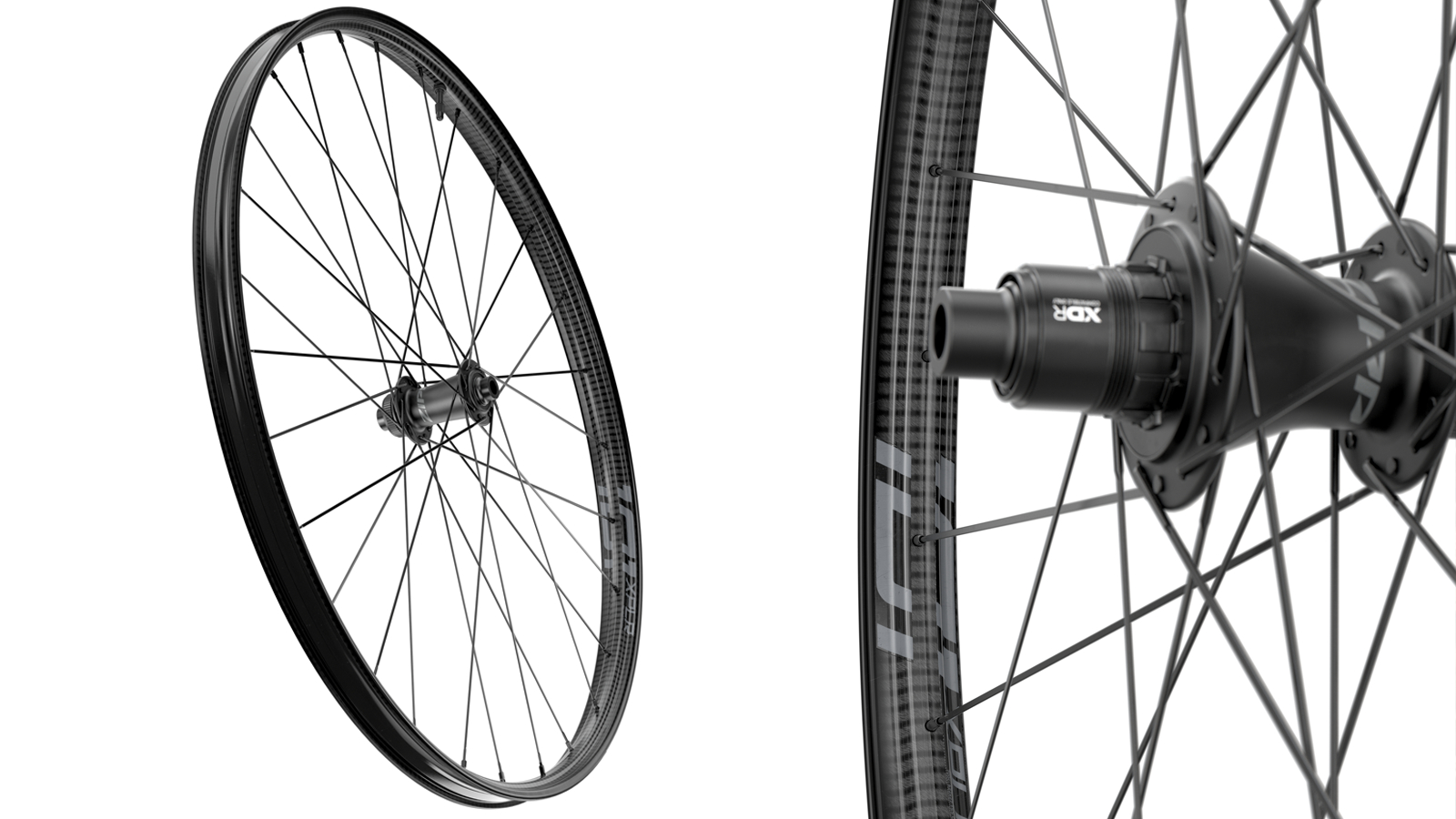SRAM’s new XPLR gravel component range combines the forces of SRAM, Rockshox and Zipp
The gravel-specific XPLR range includes new groupset components, wheels, suspension and an innovative dropper post design

SRAM has launched its new XPLR (pronounced explore) gravel component range which draws on the expertise of SRAM and its umbrella brands to offer a full complement of gravel-specific components.
Up until now, SRAM has offered a competitive option in the gravel and adventure groupset market using a hybrid mix of road and mountain bike groupsets to bring one-by drivetrains to drop-bar bikes. That said, it was only a matter of time before the American company launched a gravel-specific drivetrain to directly compete with Shimano’s GRX and Campagnolo’s Ekar ranges.
SRAM goes one step further, with the accompanying support of Zipp and RockShox, it is offering a broader range of gravel components to extend its new XPLR ecosystem. The new range consists of Red, Force and Rival 1x AXS drivetrains from SRAM, a Zipp 101 XPLR wheelset and a finishing kit. What will likely be the biggest talking point is the gravel suspension from RockShox (dubbed Rudy XPLR suspension) and a Reverb AXS XPLR dropper post that also offers suspension.

SRAM XPLR gravel groupset
SRAM’s new XPLR groupset shares much of the same technology as its existing road groupsets, including the level designation of Red, Force and Rival, although there are a few key differences that make it better suited to gravel riding.
The most notable difference is the introduction of a 10-44T cassette which SRAM claims 'finds the gravel gearing sweet spot', offering enough range for steep climbs and fast, road riding. The cassettes offer a 440 per cent gear range over 12 sprockets and feature what SRAM calls X-Range. This basically means that the cassette offers wider gaps between the lower gears when climbing and tighter gaps in the high gears for a better experience on the road.
The cassette comes in two levels, XPLR XG-1271 (373g) and XPLR XG-1251(412g), and uses SRAM’s current XDR driver body freehub design and current SRAM flat-top chains so there shouldn't be any wheel compatibility issues. XPLR cassettes will cost $210 / €225 / £200 and $150/ €160 / £145, respectively.
The XPLR range is only available as an electronic AXS groupset, with the derailers featuring much of the same tech as the road variants including the customization available from the AXS ecosystem, batteries and Orbit fluid damper to keep the chain secure (Rival will use a mechanical spring). The new XPLR rear mechs have been redesigned as 1x specific and optimized to be used with the new XPLR cassettes. SRAM has increased the pulleys and tweaked the placement which is said to improve 1x shifting performance.
The derailleurs will cost $710 / €685 / £610 for Red, $490 / €465 / £415 for Force and $255 / €265 / £236 for Rival.
The cranksets are also 1x specific and use a new direct-mount narrow-wide chainring (Rival XPLR uses the current version). The cranksets come in two options of standard (Red XPLR (462g) and Force XPLR (598g)) or wide (Force XPLR (604g) or Rival XPLR (706g)). The wide option brings the chain line further outboard to give more tire clearance and is compatible with road and MTB bottom bracket widths as well as 135mm, 142mm and Boost rear spacing. The cranksets can be specced with 38T, 40T, 42T, 44T, 46T chainrings, come in a wide range of sizes (165mm, 167.5mm, 170mm, 172.5mm, 175mm, 177.5mm) and can be upgraded with a power meter.
The cranksets are priced at $690 / €700 / £625 for Red XPLR, $420 / €435 / £390 for Force XPLR and, although not specified in the press release, pricing for Rival XPLR is likely to be $130 / €135 / £120, the same as the recently released SRAM Rival eTap AXS Wide Range HRD crankset.

Rockshox Rudy Ultimate XPLR and Reverb XPLR AXS
Arguably RockShox’s inclusion in the XPLR range is going to garner the most attention. It's not uncommon for a groupset to include wheelsets and finishing kit but to include a suspension fork and dropper post is very unusual.
RockShox's new Rudy Ultimate XPLR suspension fork features a ground-up design that has been purpose-built for gravel riding. Featuring 30mm or 40mm of travel, the Solo Air sprung suspension is managed by a Charger Race Day damper, a lightened version of the one found in the SID Ultimate cross-country fork, which has been tuned for efficiency over small high-speed vibrations and has rebound adjustment and lockout. The chassis is built around 30mm stanchions, a lightweight crown and a 12mm axle to provide a balance of lightness and stiffness that's required for gravel riding. Tire clearance is a health 700x50mm for those who are exploring the back and beyond whereas stealth full and short fender mounts offer comfort if your gravel bike is also your wet weather commuter. The retail price for the Rudy XPLR fork is $799 / €869 / £779.
Gravel dropper posts aren't anything new, but the new Reverb XPLR AXS has a party trick that could make it one of the best short travel dropper posts available. While performing the standard up and down dropper post tasks, the Reverb XPLR features completely new air-only internals and a new feature called ActiveRide which adds compliance to the seatpost for a smoother experience when riding seated. Controlled from the handlebar (drop and flat bar control options available, sold separately) the post can be slammed out the way, raised to full extension or dropped a few millimeters to activate ActiveRide. When dropped from full extension the ActiveRide is enabled and the seatpost is able to offer compliance.
The post comes in 50mm or 75mm travel options, 400mm and 350mm (50mm drop only) lengths, and 27.2mm to ensure compatibility with gravel frames. The Reverb AXS will cost $600 / €600 / £500.

Zipp 101 XPLR wheelset
To compete with the best gravel bike wheels, Zipp has also adapted its mountain bike knowledge with its new 101 XPLR wheelset, tweaking the compliant rim design of the Zipp 3Zero Moto carbon enduro wheel into a gravel format. The design uses a single-wall rim to allow a small amount of flex while keeping the rim parallel with the ground, SRAM calls this ‘ankle compliance’ and says this offers more vibration damping and improved grip in corners. The rims have a supportive 27mm internal width for the best performance with larger gravel tires and have the option to add on TyreWiz if you want to dial in and monitor your tire pressure from your GPS. The wheels are built around Zipp’s ZR1 hubs which feature 66 points of engagement and will be available in both 650b and 700c sizes weighing in at 1,665g and 1,590g, respectively.
Pricing for the Zipp 101 XPLR is the same for both wheel sizes and will be $850 / €870 / £780 for the front wheels, and $950 / €970 / £866 for the rear wheels.
To complement the new 1010 XPLR wheelset, Zipp has also rebranded its existing G40 gravel tire and Service Course SL-70 drop bar to include it in the XPLR range and unify the XPLR aesthetic.

Availability of the XPLR range
The big question around bike components these days is availability. SRAM is quoting limited availability for the Red XPLR and Force XPLR in August with wider availability in September. Rival XPLR will follow a month later.
RockShox is also working to a similar timescale, Rudy Ultimate XPLR is initially available from August 2021 with wider availability in September 2021 and the Reverb AXS XPLR is pegged for September 2021 and an open-ended wider availability in later 2021. Zipp’s 101 XPLR range has the same time scale as the Reverb AXS.

Graham Cottingham joined the BikePerfect team as our senior tech writer in 2020. With over 20 years of riding experience, he has dabbled in downhill, enduro, and gravel racing. Not afraid of a challenge, Graham has embraced bikepacking over the last few years and likes nothing more than strapping some bags to his bike and covering big miles to explore Scotland's wildernesses. When he isn’t shredding the gnar in the Tweed Valley, sleeping in bushes, or tinkering with bikes, he is writing tech reviews for BikePerfect.
Rides: Cotic SolarisMax, Stooge MK4, 24 Bicycles Le Toy 3, Surly Steamroller
Height: 177cm
Weight: 71kg
